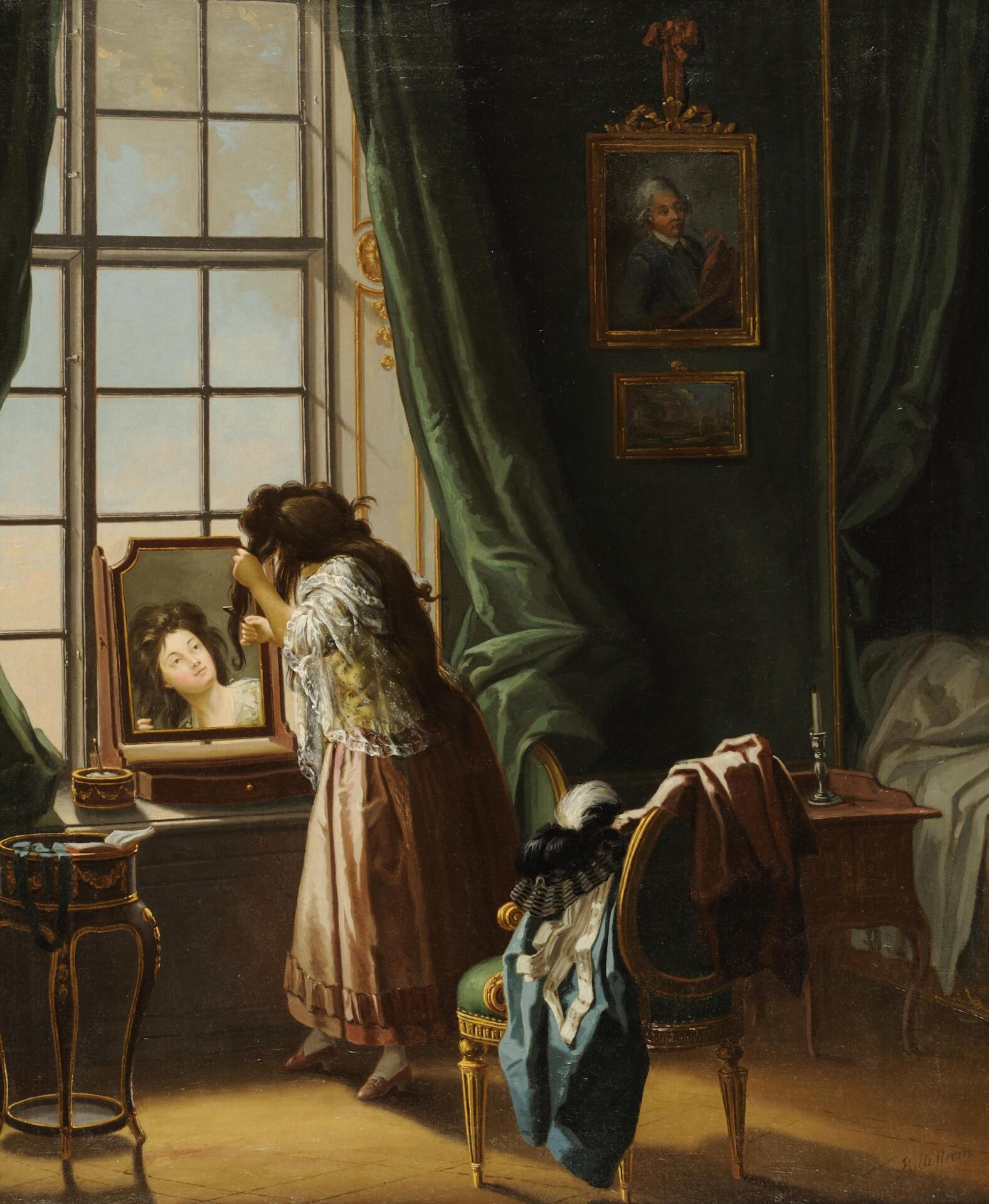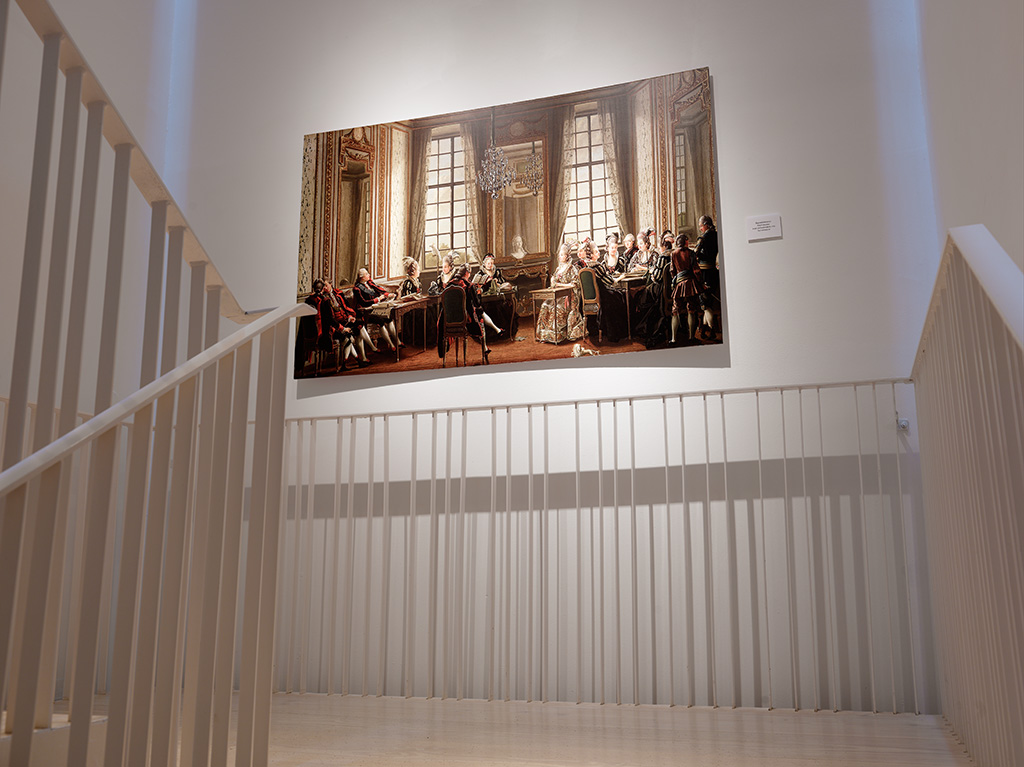Pehr Hilleström
25 April—14 June 2015
Previous exhibition

Visit the museum
Buy annual pass
25 April—14 June 2015
At the top of the “gold house”, designed by Gert Wingårdh and his team of architects, is a replica of the ground floor of Sven-Harry’s 18th-century manor Ekholmsnäs. How was this manor decorated in the 18th century? No one knows today, but, in dialogue with this “rooftop home”, Sven-Harry’s Konstmuseum is organising an exhibition of an artist who has affectionately portrayed Swedish 18th-century interiors in great detail.
Most of the works in the exhibition belong in private collections and have not been shown to the public before. Nordiska museet, Stockholm University, Norrköpings konstmuseum, Malmö museum, Göteborgs konstmuseum, Gävleborgs museum and Östergötlands museum have also contributed generously to the exhibition.
Pehr Hilleström was a painter at the court of King Gustav III, where he portrayed the magnificent royal interiors. But he was just as comfortable portraying middle-class homes, with their upstairs and downstairs inhabitants engaged in their day-to-day activities, or farm interiors, the great Stockholm fire, jousting competitions and still-lifes. He peeped behind the scenes at the Bollhuset theatre and Gustav III’s opera, portraying the famous actors, dancers and singers of the time. Hilleström painted mines, anchor smithies, and glass blowers in front of their kilns at the glassworks on Kungsholmen.
From our contemporary perspective, we are fascinated by the lighting in 18th-century homes. Wax and tallow candles were expensive and only used sparingly, even on special occasions. Hilleström has captured this everyday light exquisitely.
He was born on the island of Väddö 1732. His father, Captain Pehr Hilleström, had been a prisoner of war in Russia in 1719-1723 but managed to return to Sweden and settled with his brother, who was the provost Väddö. Pehr Hilleström had twelve siblings. In 1743, the family moved to Stockholm, where they lived on a frugal income. Hilleström embarked on his artistic career at the mere age of ten, first as an apprentice to the landscape and mural painter Johan Philip Korn (1727-1796). Between 1744 and 1747, he studied under the German-born fan painter Christian Fehmer. At the Royal Academy of Drawing in Stockholm he was taught by the masters Taraval and Rehn. Aged twelve, he was apprenticed to the hautelisse weaver Jean Louis Duru. When Duru died in 1753, Hilleström took over his uncompleted assignments, including a canopy for the throne at Stockholm Palace. When he was 23, he went to Paris to study weaving and painting.
In 1759, Hilleström married Ulrica Lode (1737-1779), the daughter of a vicar in Harmånger and Jättendal in Hälsingland. It is her slim figure that features in many of Hilleström’s interiors. His wife lived to see him appointed royal court painter in 1776, but when he was made professor at the Royal Academy she had been dead for many years. Six years before he died, Hilleström made a catalogue of all his works. The list is impressive, with more than 1,000 paintings.











